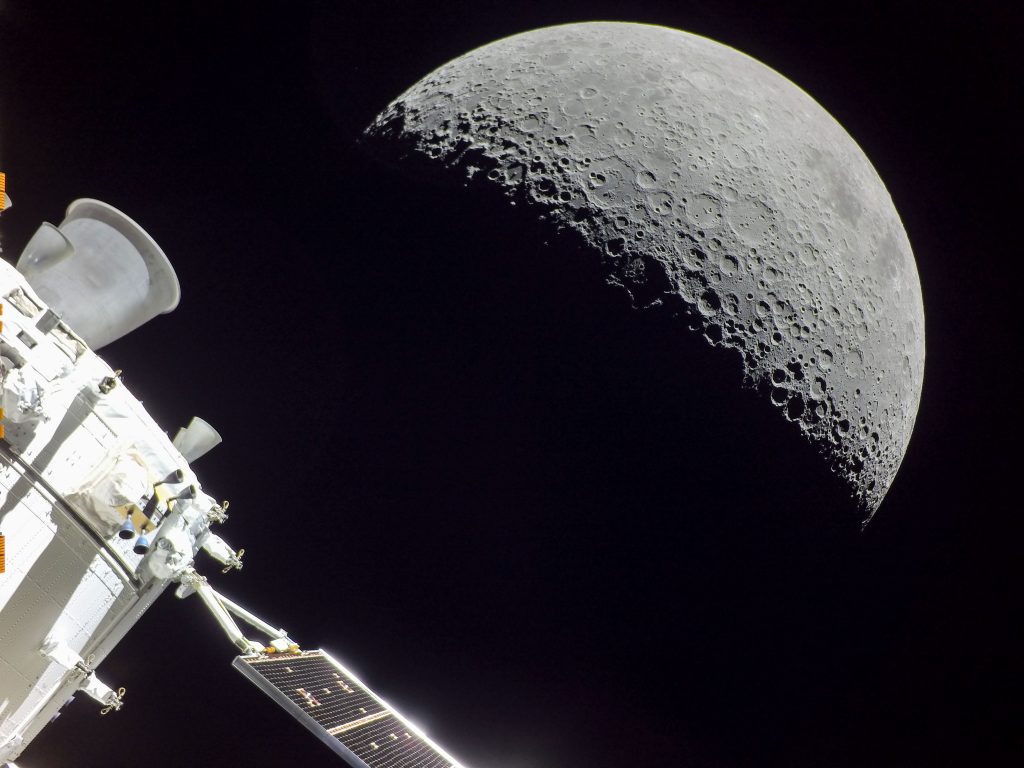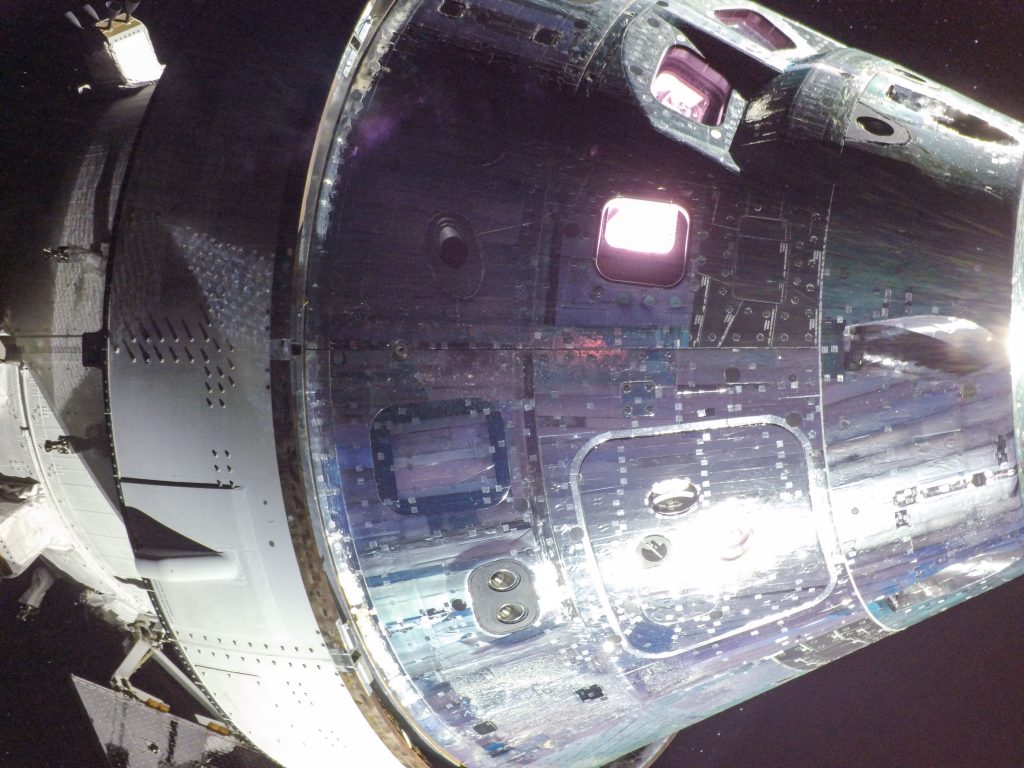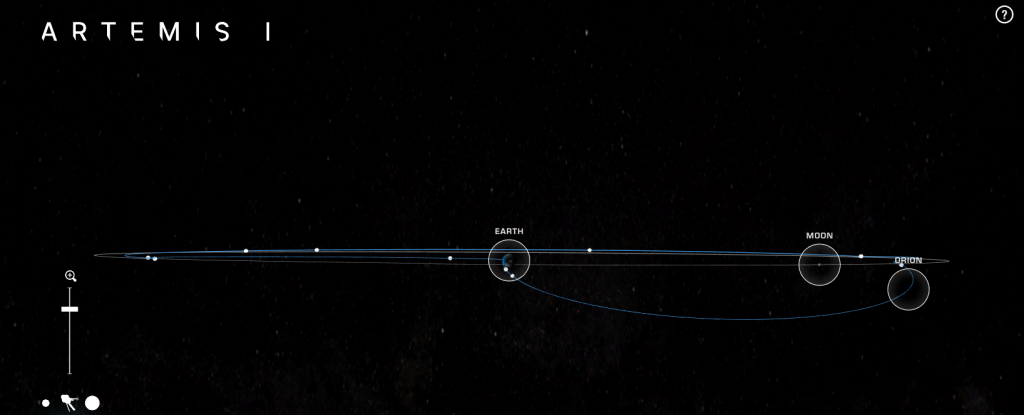Orion left the lunar sphere of gravitational influence on flight day 21, 6 December at 08:29 CET (07:29 GMT) just a day after completing the return powered flyby burn around the Moon. Earth’s force of gravity is now the main gravity force on the spacecraft.
The European Service Module executed the fourth return trajectory correction burn at 11:43 CET (10:43 GMT) using the 21 reaction control system thrusters. The burn lasted 5.7 seconds and changed the spacecraft speed by 0.16 m/s.

Flight controllers used Orion’s cameras at the end of the European Service Module’s 7-m long solar array wings to inspect the crew module thermal protection system, the second of three planned visual spacecraft inspections. Teams conducted this survey early in the mission to provide detailed images of the spacecraft’s surfaces after it had flown through the portion of Earth’s orbit containing the majority of space debris, and teams reported no concerns after reviewing the imagery. This second inspection during the return phase is being used to assess the overall condition of the spacecraft several days before reentry.

During both inspections, the Integrated Communications Officer, or INCO, commanded cameras on the four solar array wings to take a series of still images. Engineers and flight controllers at NASA’s Johnson Space Center in Houston will review the imagery over the coming days. A final photographic survey will be conducted this Friday three days before splashdown.

Teams responsible for recovering Orion after its splashdown are preparing for the 11 December splashdown off the coast of California. The mission management team will determine the landing site location on 8 December.
The current reentry path for Orion’s return to Earth is unusual for a space mission as it arrives flying South to North. Orion is now off the two-dimensional plane of the Moon and Earth and has a small angle, adding a three-dimensional element to the orbital mechanics. Unlike the outbound flight to the Moon, the return leg ventures out of the plane of rotation of Earth and the Moon. This is visually obvious in the screenshot from NASA’s excellent track Artemis tool below. The reason for this approach is to enter Earth’s atmosphere at the right angle and flight path, and also because it minimises the need for thruster firing and course corrections along the voyage.

Just after 00:30 CET on 6 December, (23:30 GMT, 5 December) Orion was traveling 392680 km from Earth and about 127 138 km from the Moon, cruising at 805 km/h.

 Automated Transfer Vehicle page
Automated Transfer Vehicle page ATV blog archive
ATV blog archive
 NASA Orion page
NASA Orion page NASA Artemis
NASA Artemis Airbus Orion page
Airbus Orion page
Discussion: one comment
Thank you for this very useful blog. I hope we will see the same for future Artemis missions.